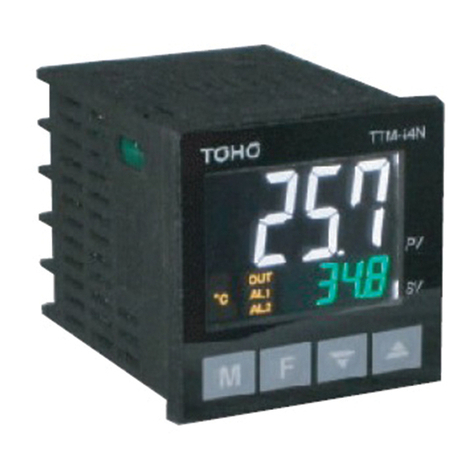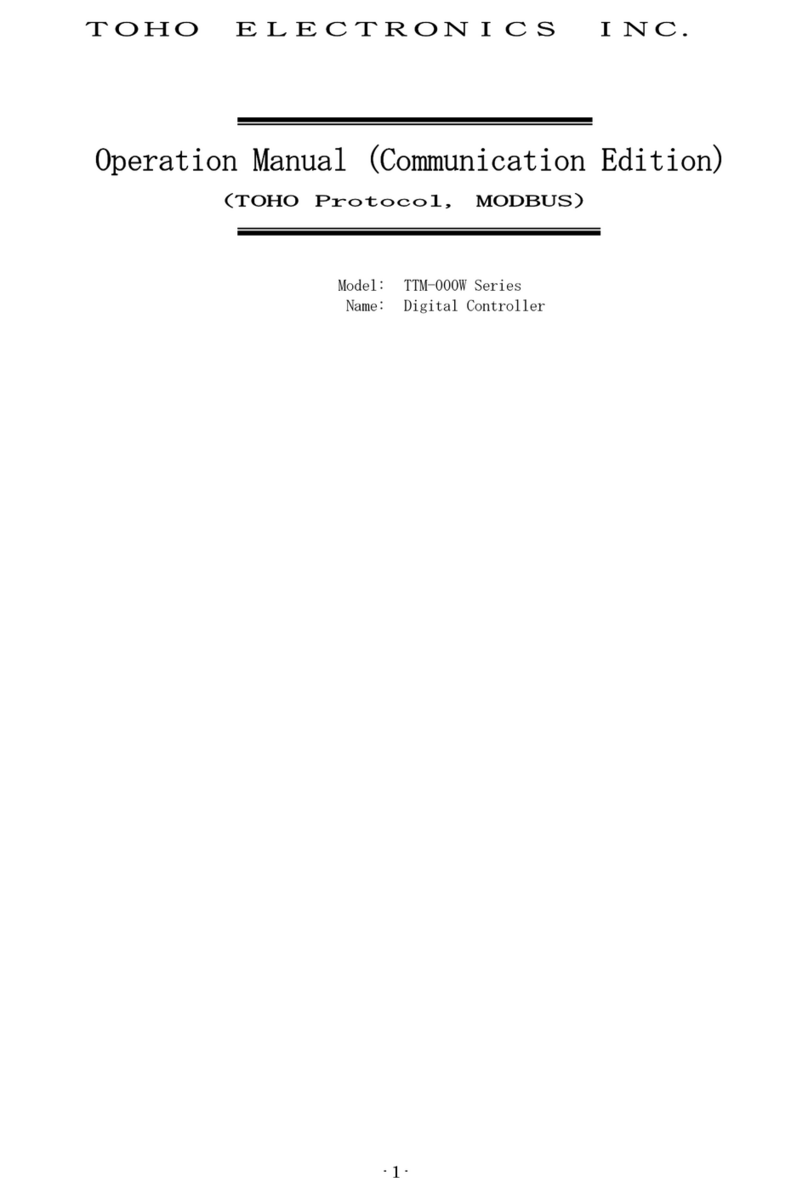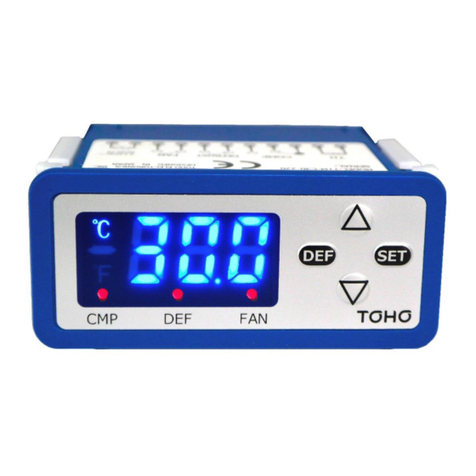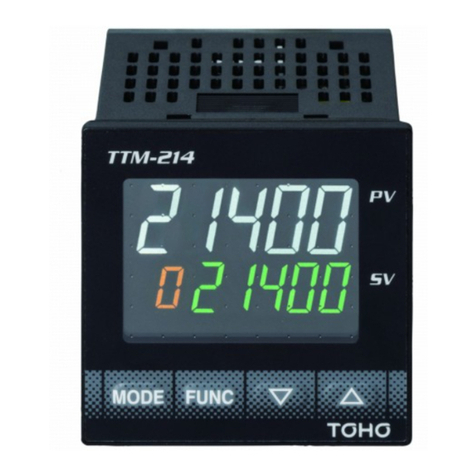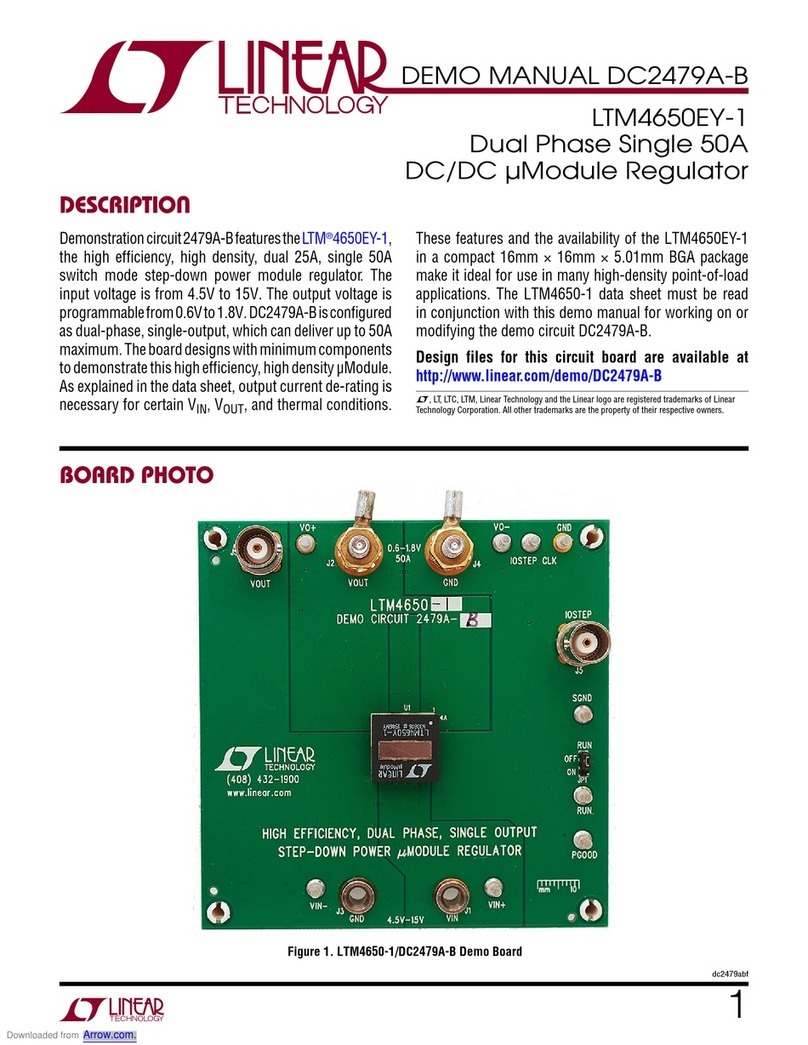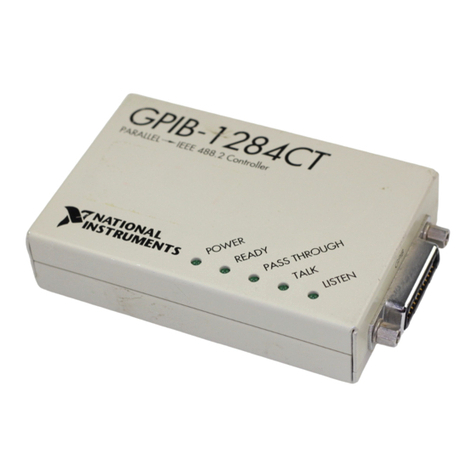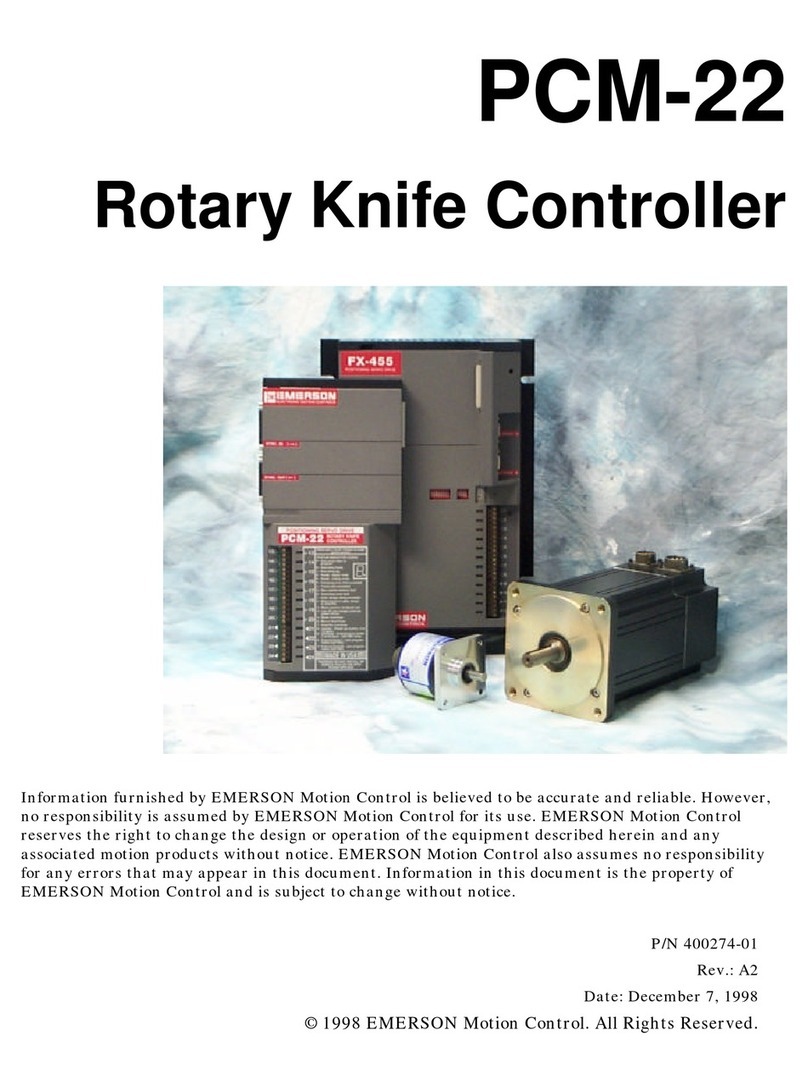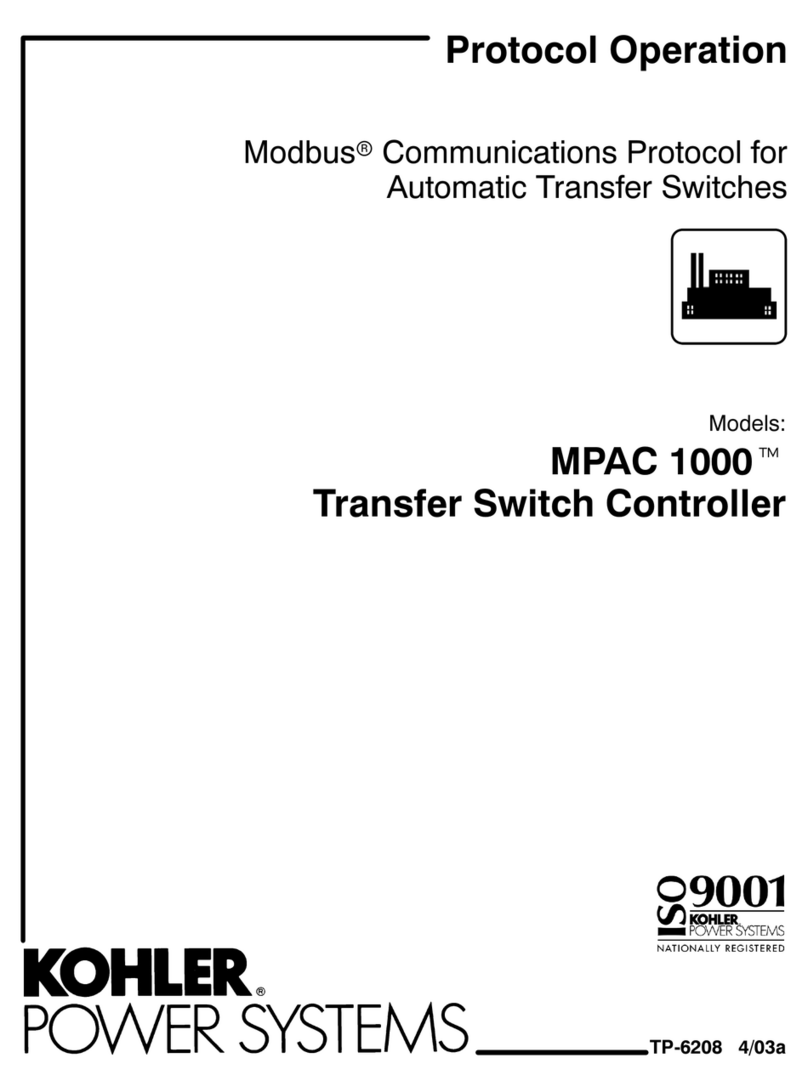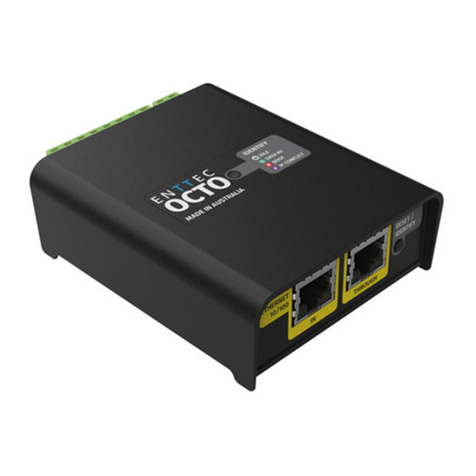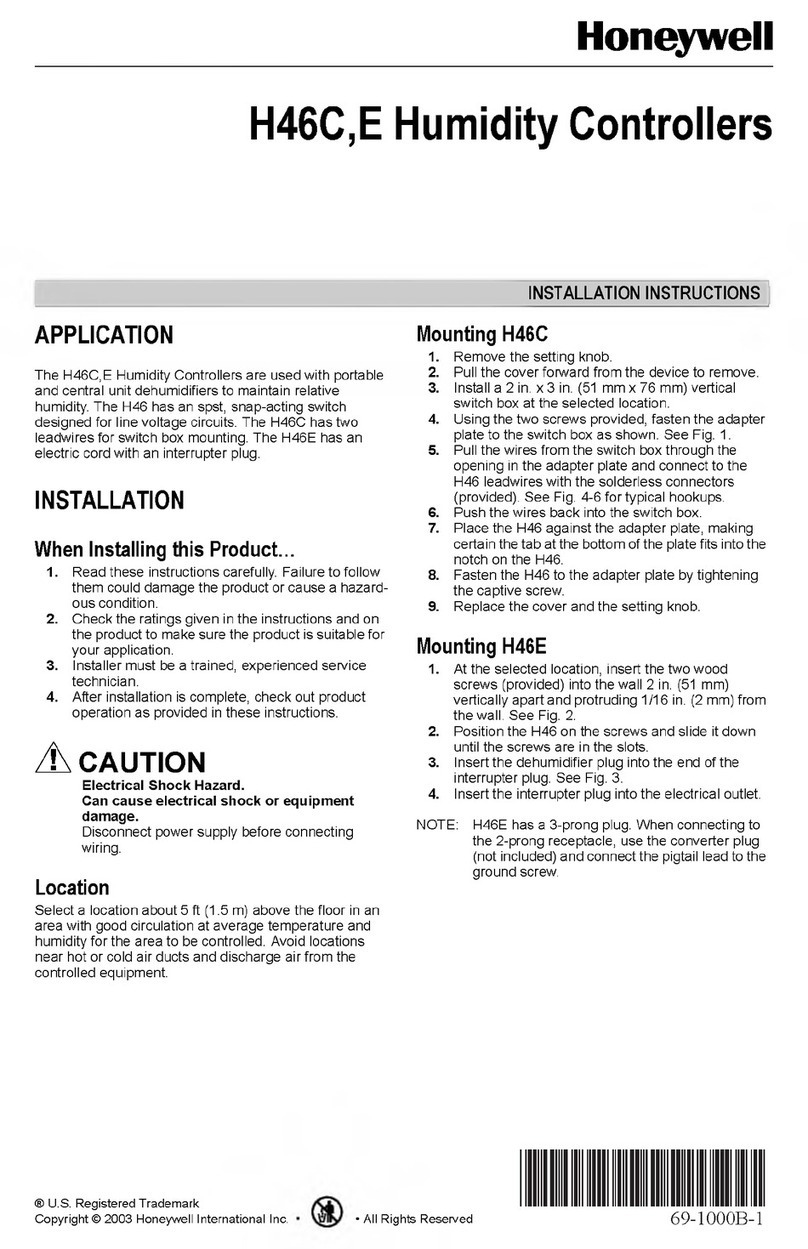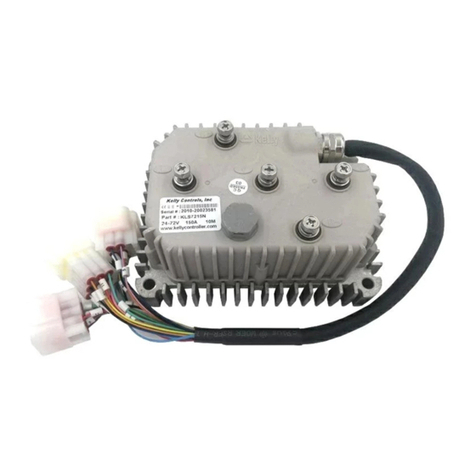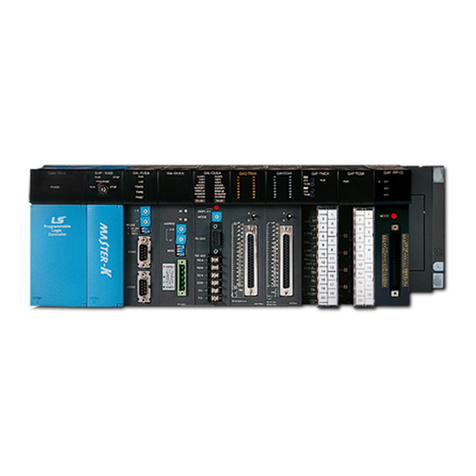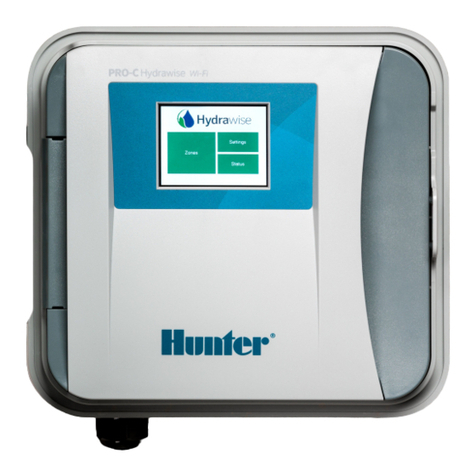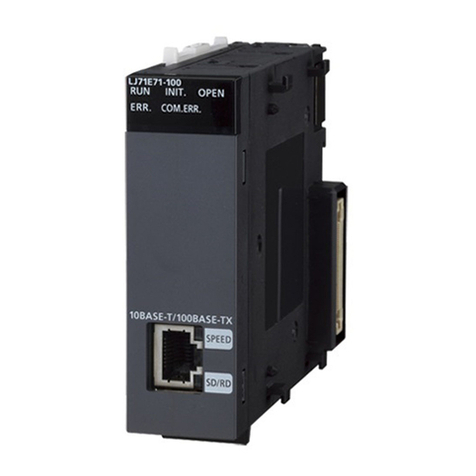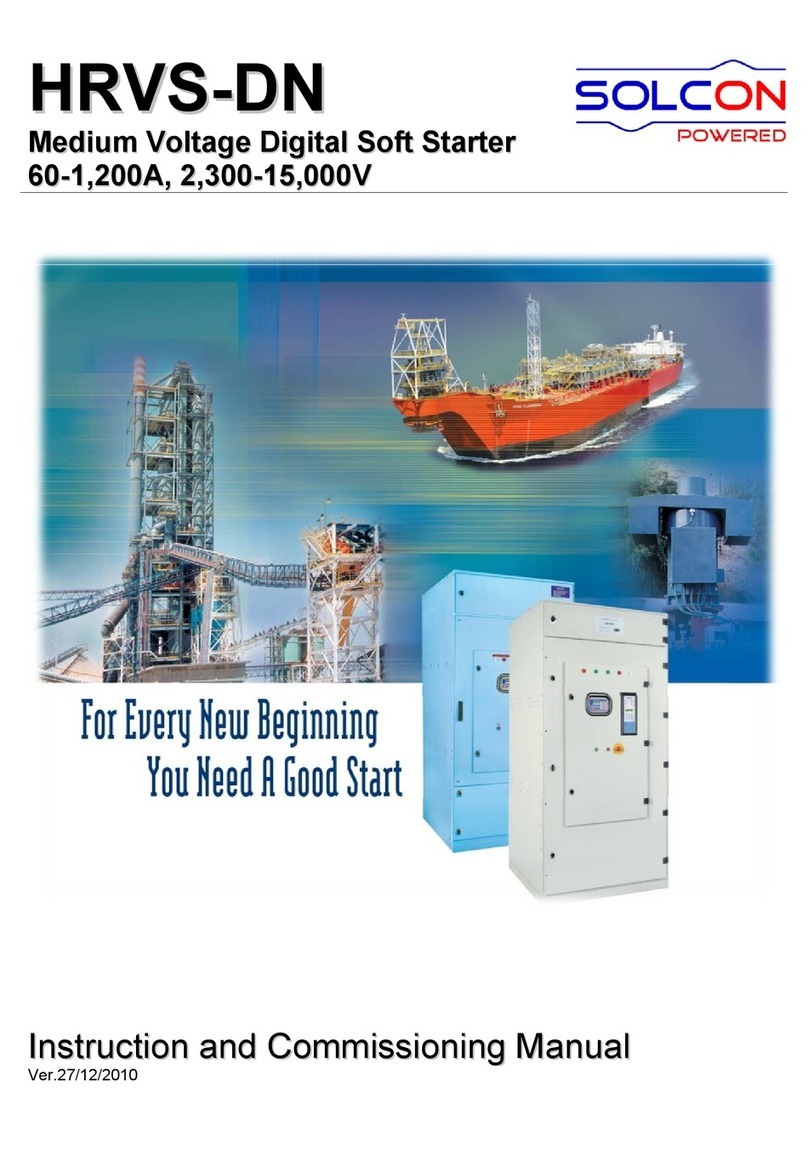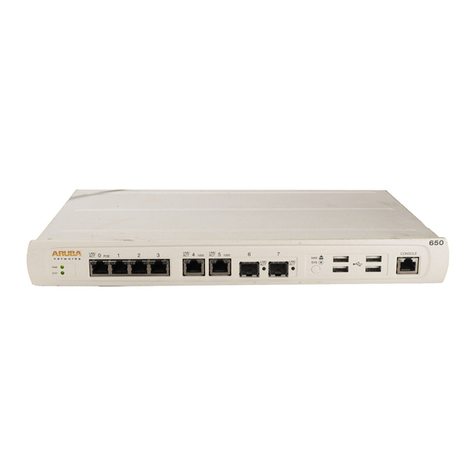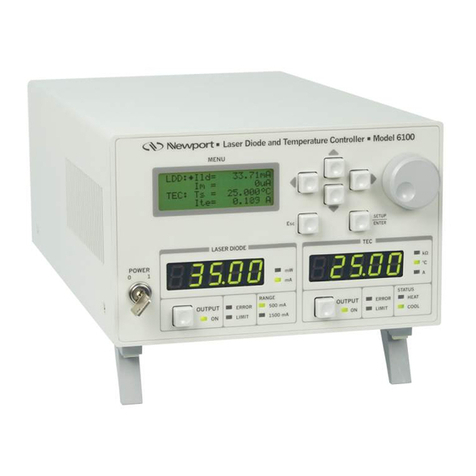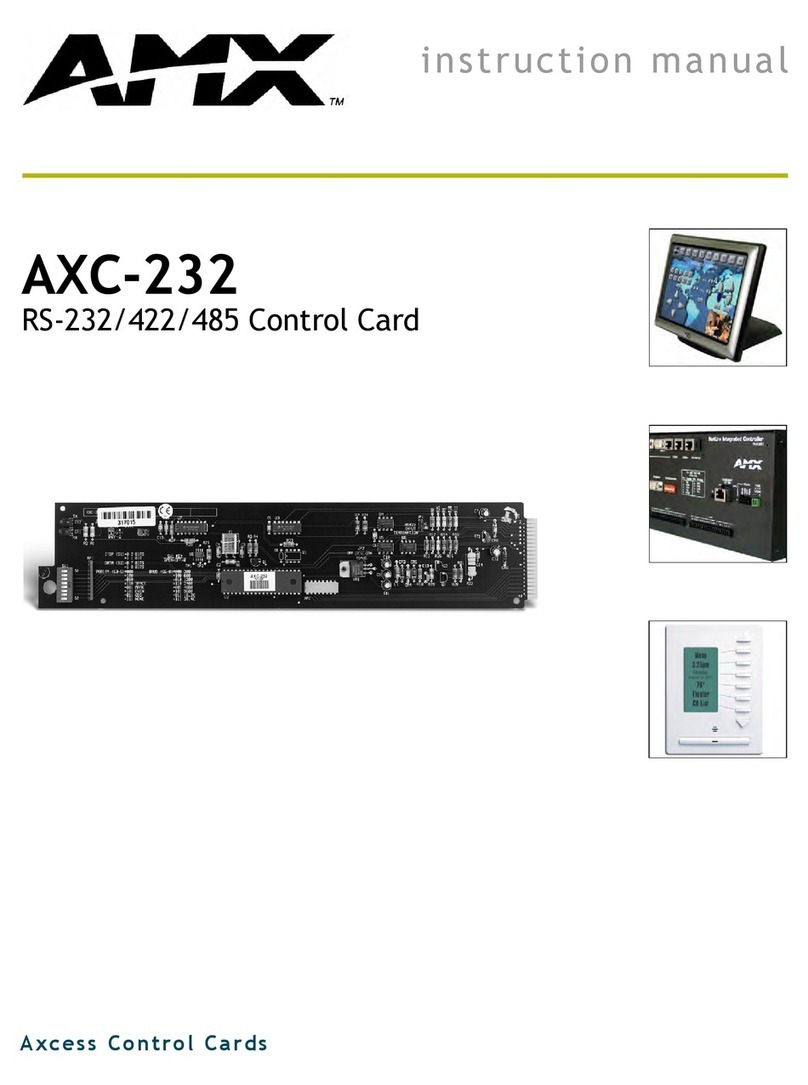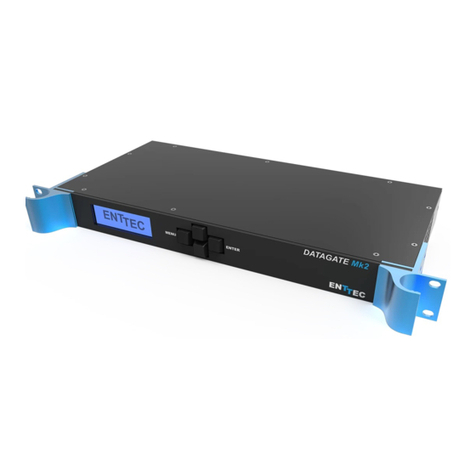TOHO TTM-00BT Series Operating and maintenance manual

1
TOHO ELECTRONICS INC.
Multi-Channel Board Controller
Detailed Manual
Thank you very much for purchasing a Multi-Channel Board Controller.
The Multi-Channel Board Controller outputs control signals that match an input from
a thermocouple (a K/J thermocouple) or an input from a temperature input from a
resistance bulb (Pt100/JPt100) to a predetermined setting.
The product comes equipped with an RS-485 or an RS-232C for data
communications with a host computer.
For control output, the product is provided with up to eight open collector outputs,
along with event outputs consisting of 11 open collector outputs (eight temperature
alarm outputs, one heater wire break alarm, one SSR breakdown alarm, and one error
alarm), eight current detector inputs, and one voltage input.
Please read this detailed manual carefully and use this product correctly.

2
Contents
1. Operating precautions..........................................................................................................3
2. Names and functions of the components .............................................................................4
2.1 Product diagram......................................................................................................... 4
2.2 Names and functions ................................................................................................. 4
3. Installation ...........................................................................................................................5
3.1 How to install the product ......................................................................................... 5
3.2 Where to install the product....................................................................................... 5
3.3 Outside dimensions.................................................................................................... 6
4. Making the connections.......................................................................................................6
4.1 Terminal arrangement diagram.................................................................................. 6
4.2 Terminal arrangement................................................................................................ 7
4.3 Cautions on making the connections......................................................................... 9
5. Before conducting control....................................................................................................9
6. Table of identifiers (codes) ..................................................................................................9
7. Function description ..........................................................................................................16
7.1 Display range and set range of temperature input ................................................... 16
7.2 Display range and set range of current detector input ............................................. 16
7.3 Voltage input............................................................................................................ 16
7.4 Control output.......................................................................................................... 16
7.5 Temperature alarm output........................................................................................ 17
7.6 Heater wire break alarm output ............................................................................... 18
7.7 SSR breakdown alarm output.................................................................................. 18
7.8 Error alarm output ................................................................................................... 18
7.9 Communication ....................................................................................................... 18
8. Specifications and ratings ..................................................................................................32
8.1 General specifications.............................................................................................. 32
8.2 Ratings and performance......................................................................................... 32
9. Maintenance and inspection...............................................................................................33

3
1. Operating precautions
When the product reaches you, please ensure that the product you have received is of the following
model which you ordered.
Model: TTM−00BT−①−R−②
①Input type.........................0: Thermocouple input
1: Resistance bulb input
②Communication type:.......M1: RS-485
M2: RS-232C
To allow you to use the product safely, this detailed manual uses the following symbols:
Warning: Mishandling despite this warning may result in the user's death, electric shock,
burn, or other risk.
Caution: Mishandling despite this caution may result in the user's minor injury or product
damage.
Warnings
•Erroneously wiring a meter will cause a breakdown, possibly resulting in a fire or other incident. After
making the connections, therefore, always ensure that the correct wiring has been made before
energizing the meter.
•Remodeling the product will cause a breakdown, possibly resulting in a fire or other incident. Therefore
do not under any circumstances do any such thing.
•Please make sure that the package for the product contains the following:
* Product proper: 1 unit
* Operation manual: 1 copy
Should you find anything missing or a wrong model or any other inconvenience, please
contact our Sales Department. The contact details are at the end of this manual.
•Please deliver this detailed manual to the user. Please store it with care.
•Unauthorized reproduction or copying of a part or a whole of this manual is prohibited.
•Specifications in this detailed manual are subject to change without notice.
•We may not be able to take responsibility for a nonconformity or trouble resulting from the user's
operation of the product.

4
2. Names and functions of the components
2.1 Product diagram
Event output Control output
CT input
Voltage
input Communi-
cation Power
Temperature
input
2.2 Names and functions
2.2.1 SW1: Unit number change --- Change product unit numbers with the rotary switch.
Unit number: 0 to F (hexadecimal)
2.2.2 SW2: Communication speed change --- Change the communication speed with DIP
switches.
Communication speed setting: 4800/9600/19200/38400 bps
2.2.3 CN1: Control output connector
Connector: XG4A-1634 (Omron) or equivalent (eight open collector outputs)
2.2.4 CN2: Event output connector
Connector: XG4A-1634 (Omron) or equivalent (eleven open collector outputs)
2.2.5 CN3: CT input connector
Connector: XG4A-1634 (Omron) or equivalent (eight CT inputs)
2.2.6 TB1: Temperature input terminal
Sensor input terminal for thermocouple input or resistance bulb input
Thermocouple input: Two-level terminal block: ML-740-W1BF-16P (a Sato part)
or equivalent
Resistance bulb input: Three-level terminal block: ML-740-W3BF-24P (a Sato
part) or equivalent
2.2.7 TB2: Power terminal
Power voltage terminal (power voltage: 24V DC + 10% -15%)
Through-type terminal block: ML-40-S1BYF-2P (a Sato part) or equivalent
2.2.8 TB3: Communication terminal
RS-485 or RS-232C communication terminal
Through-type terminal block: ML-40-S1BYF-3P (a Sato part) or equivalent

5
2.2.9 TB4: Voltage input terminal
Voltage input terminal (input voltage range: 12 to 24V DC ±10%)
Through-type terminal block: ML-40-S1BYF-2P (a Sato part) or equivalent
2.2.10 LED1: Communication A RXD lamp (green)
2.2.11 LED2: Communication B TXD lamp (green)
2.2.12 LED3: Power lamp (green)
2.2.13 LED4 to 11: Temperature alarm output lamps (red)
2.2.14 LED12: Alarm output lamp for heater wire break (red)
2.2.15 LED13: Alarm output lamp for SSR breakdown (red)
2.2.16 LED14: Error alarm output lamp (red)
2.2.17 LED15 to 22: Control output lamps (orange)
Recommended socket for connector
MIL type socket (with strain relief): XG4M-1630-T (manufactured by Omron)
3. Installation
3.1 How to install the product
•See "3.3 Outside dimensions" and install the product with nine screws (φ3.5).
•Install the board as floated by at least 5mm with a spacer or something similar.
•Install it horizontally. Or install it vertically with its power supply facing upwards.
•When installing two or more products of this kind, install them at least 50mm apart.
•Connecting crimp terminals: Use crimp terminals of specified dimensions (M3, no more than
6.9mm wide).
•Connecting exposed wires: Use wiring of AWG22 to 16.
•Terminal screws: Tighten them to a specified torque (about 0.5N-m). A loose screw may cause a
fire or malfunction.
3.2 Where to install the product
Please install the product in either of the following places:
•Places where the temperature, humidity, and other conditions are within the operating
environmental ranges
•Places free of dust, greasy fumes, and other foreign matter
•Places protected as much as possible from mechanical vibration, impact, and other external forces
•Places as far as possible from devices using high-pressure ignition equipment
•Places away from high-voltage lines, welding machines, and sources of electric noises
•Places free of sulfide gases and corrosive gases
•Places protected from direct sunlight
•Places protected from water splashes
•Places protected as much as possible from electromagnetic effects

6
3.3 Outside dimensions
4. Making the connections
4.1 Terminal arrangement diagram
4.1.1 Thermocouple input
Board height
•Thermocouple input
29.2mm maximum
•Resistance bulb input
39.1mm maximum
(from the bottom of the board
to the top of the part)
9-
φ
3.5 drill
Sub-board 36
×
114.5
Event output
Control output
CT input Voltage
input Communi-
cation Power
Temperature input

7
4.1.2 Resistance bulb input
4.2 Terminal arrangement
4.2.1 Temperature input (TB1: terminal block): For thermocouple input
* For terminal numbers, see the carvings in the terminals.
Terminal
No. CH
Terminal
name Terminal
No. CH
Terminal
name Terminal
No. CH
Terminal
name Terminal
No. CH
Terminal
name
A1 +A3 +A5 +A7 +
B1 1
−B3 3
−B5 5
−B7 7
−
A2 +A4 +A6 +A8 +
B2 2
−B4 4
−B6 6
−B8 8
−
4.2.2 Temperature input (TB1): For resistance bulb input
Terminal
No. CH
Terminal
name Terminal
No. CH
Terminal
name Terminal
No. CH
Terminal
name Terminal
No. CH
Terminal
name
A1 AA3 AA5 AA7 A
B1 BB3 BB5 BB7 B
C1
1
bC3
3
bC5
5
bC7
7
b
A2 AA4 AA6 AA8 A
B2 BB4 BB6 BB8 B
C2
2
bb4
4
bC6
6
bC8
8
b
4.2.3 Power (TB2: terminal block)
Terminal
No. Polarity
Power
voltage
1+
2−24V
4.2.4 Communication (TB3: terminal block)
Terminal
No. RS-485 RS-232C
1ARXD
2BTXD
3SG
Event output
Control output
CT input Voltage
input Communi-
cation Power
Temperature input

8
4.2.5 Voltage input (TB4: terminal block)
Terminal
No. Polarity
1+
2−
4.2.6 Control output (CN1: connector)
Connector
No. CH Terminal
name
11O.C
21COM
32O.C
42COM
53O.C
63COM
74O.C
84COM
95O.C
10 5COM
11 6O.C
12 6COM
13 7O.C
14 7COM
15 8O.C
16 8COM
O.C.: open collector output
COM: common
4.2.7 Event output (CN2: connector) 4.2.8 CT input (CN3: connector)
Connector
No. CH Terminal name
Connector
No CH
11Temperature alarm 1 output O.C. 11
22Temperature alarm 5 output O.C. 21
33Temperature alarm 2 output O.C. 32
44Temperature alarm 6 output O.C. 42
55Temperature alarm 3 output O.C. 53
66Temperature alarm 7 output O.C. 63
77Temperature alarm 4 output O.C. 74
88Temperature alarm 8 output O.C. 84
91Temperature alarm 1 to 4 output COM 95
10 2Temperature alarm 5 to 8 output COM 10 5
11 3Alarm output O.C. for heater wire break
11 6
12 4Alarm output COM for heater wire break
12 6
13 5SSR breakdown alarm O.C. 13 7
14 6SSR breakdown alarm COM 14 7
15 7Error alarm O.C. 15 8
16 8Error alarm COM 16 8
O.C.: open collector output
COM: common

9
4.3 Cautions on making the connections
Warning
•Before making the connections, turn off this product. Otherwise you may get an electrical shock.
Warnings
•This product will not begin control for about 10 seconds after being turned on. (It will not activate its
outputs or other components.) Be careful if you wish to use the product as an interlocking circuit.
•Check the operation manual and other documents to ensure that you make the correct connections for
the temperature input terminal, power terminal, and other terminals.
•To connect a resistance bulb to this product, use wiring having a line resistance of no more than
5Ωper wire.
•To connect a thermocouple to this product, use a specified kind of compensating lead wire or
element wire.
•Use a shielded wire if you wish to use this product near a noise source. Do not wire an
input/output line in the same duct or conduit tube.
•Separate the input/output signal lines at least 50cm from the power line and load line.
5. Before conducting control
Selecting PID control Selecting ON/OFF control
This product is factory-configured to a "proportional
band" of 3.0. This product can conduct control in that
state. For better control, however, auto-tune (AT) this
product. AT automatically sets settings (values P, I, and
D) required for control. For AT, put this product into an
actual operating state (a state where the sensor input,
control output, and other components are wired). AT
takes some time.
This product is factory-
configured to a "sensitivity" of 0.
If conducting control causes the relay to flutter, increase
the sensitivity to reduce the flutter. If conducting
control causes this product to stabilize at a level lower
than the set temperature, increase the parameter "OFF
point" to change the ON/OFF point without changing the
setting.
6. Table of identifiers (codes)
a) Identifier: A code that represents an item. Enter the code into the identifier field in the message.
(The code is a three-digit figure.) The □in the frame represents SP (:space:ASCII code...20H).
b) Name: Item name
c) R/W: Specifies which function (read or write) is possible for an identifier into the current memory
bank, or whether both of those functions are possible.
r/w: Specifies which function (read or write) is possible for a memory bank other than the current
one, or whether both of these functions are possible. (This identifier can be read and written in a
memory bank.)
d) Description: Gives a description and specifies a set range and other details.
Note: For the R/W to a character not meeting the display conditions, this product responds with
"NAK2."

10
Parameter
a) Identifier b) Name c) R/W d) Description and set range e) Remark
Initial value (communication
numerical data)
TC, thermocouple;
Pt, resistance bulb
SV1
00000
Setting R/W
r/w R/W of the control settings
Thermocouple input:
Thermocouple K, 0.0 to 1300.0°C
Thermocouple J, 0.0 to 800.0°C
Resistance bulb input: PT100/JPT, -199.9 to 500.0°C
□CF
00000
Set a temperature unit R/W R/W of the °C/°F
°C: 00000
°F: 00001
Channel not specified
INP
TC: 00000
Pt: 00010
Set an input type R/W R/W of the input type settings
Thermocouple input models:
Thermocouple K: 00000
Thermocouple J: 00001
Resistance bulb input models:
Pt100: 00010
JPt: 00011
Neither the
thermocouple input nor
the resistance bulb
input can be changed.
PVG
00100
Set a PV correction gain R/W
r/w R/W of the PV correction gain setting
Set range: 0.50 to 2.00 times Measurement
Gain correction
PVS
00000
Set a PV correction zero
point R/W
r/w R/W of the PV correction zero setting
Set range: -199 to 999°C/-199.9 to 999.9°CMeasurement
Zero correction
PDF
00001
Set an input filter R/W R/W of the input filter setting
Set range: 0 to 99 seconds
□DP
TC: 00000
Pt: 00001
Set a decimal point R/W R/W of the decimal point setting
No decimal point: 00000
Decimal point provided: 00001
□AT
00000
Start/release AT R/W R/W of the AT start/release
Start: 00001
Release: 00000
The W is not possible
during ON/OFF
control.

11
Event output parameters
a) Identifier b) Name c) R/W d) Description and set range e) Remark
Initial value (communication
numerical data)
TC, thermocouple;
Pt, resistance bulb
E * F
*: 1 to 8
00000
Temperature alarm
output*functional setting R/W R/W of the temperature alarm output*functional
setting
000 **PV temperature alarm functions
Type
0
None
1
Deviation top/bottom limit alarm
Additional functions
2
Deviation top limit alarm
Type
3
Deviation bottom limit alarm
0
None
4
Deviation range alarm
1
Hold
5
Absolute value top/bottom limit
alarm
2
Standby sequence
6
Absolute value top limit alarm
3
Hold + standby
sequence
7
Absolute value bottom limit
alarm
8
Absolute value range alarm
*1
E * H
*: 1 to 8
00000
Set a temperature alarm
output*top limit R/W
r/w
R/W of the temperature alarm output*top limit setting
Set range: -199 to1500°C/-199.9 to 1500.0°C
*1
E * L
*: 1 to 8
00000
Set a temperature alarm
output*bottom limit R/W
r/w
R/W of the temperature alarm output*bottom limit
setting
Set range: -199 to1500°C/-199.9 to 1500.0°C
*1
E * C
*: 1 to 8
00000
Set a temperature alarm
output*sensitivity R/W R/W of the temperature alarm output*sensitivity
setting
Set range: -199 to1500°C/-199.9 to 1500.0°C
*1
CTF
00000
CT function R/W R/W of the presence or lack of an alarm about heater
wire break and SSR breakdown
00000: None
00001: Heater wire break alarm function
00002: SSR breakdown alarm function
00003: Heater wire break + SSR breakdown alarm
function
Heater wire break:
LED12
SSR breakdown:
LED13
C * I
*: 1 to 8
00000
CT allocation channel R/W R/W of the status about the channel to which CT*(1 to
8) should be allocated
00000: None (not allocated)
00001 to 00008: (CH)
Channel not specified
ALB
00000
Error alarm function R/W R/W of the presence or lack of memory errors, A/D
errors, and sensor error alarms
00000: None
00001: Present
Error alarm: LED14
CT*
*: 1 to 8
00000
Set an output current error R/W R/W of the current of the heater current detector
Set range: 0.0 to 50.0A AC Channel not specified

12
Voltage input parameters
a) Identifier b) Name c) R/W d) Description and set range e) Remark
Initial value (communication
numerical data)
TC, thermocouple;
Pt, resistance bulb
DIF
00000
Set a voltage input function
R/W R/W of the voltage input function setting
Numerical
data Function type When voltage is
applied
00000 None
00001 SV/SV2 function SV2
00002 RUN/READY function READY
00003 Auto/manual function Manual
00004 Forward/reverse operation
function Forward
operation
00005 Auto-tuning function AT start
00006 Forward operation
(SV2)/reverse operation
(SV) function
Forward
operation (SV2)
SV2
00000
Setting 2 R/W
r/w R/W of the control setting 2
Set range: SLL to SLH
Unit common parameters
a) Identifier b) Name c) R/W d) Description and set range e) Remark
Initial value (communication
numerical data)
TC, thermocouple;
Pt, resistance bulb
AWT
00000
Response delay setting R/W R/W of the response delay setting
Set range: 0 to 250mS Channel not specified
MBK
00001
Memory bank reading R/W Replaces the specified memory bank with the current
memory bank.
00001 to 00008 (example: memory bank 1 is 00001)
No writing is possible
during AT.

13
Monitor window parameters
a) Identifier
b) Name c) R/W d) Description and set range e) Remark
PV1 Measurement RUsed as a measurement monitor
When over-scale: HHHHH (the same is true when the
sensor has a wire break)
When under-scale: LLLLL
CM*
*: 1 to 8 CT measurement RR of the measured current of the heater current
detector
When over-scale: HHHHH
When reading is impossible: -----
When reading is
impossible: The CT
value cannot be read
unless the output of no
less than 190mS is
turned on.
DIM DI monitor RR of the voltage input monitoring
00000: State where voltage input is not applied
00001: State where voltage input is applied
OM1 Monitor the control output RR of the control output monitoring
000①②
①Output 1 state…1:ON/0:OFF
②Output 2 state…1:ON/0:OFF
*2
EM1 Monitor the temperature
alarm outputs 1 to 4 RR of the temperature alarm output monitoring
0①②③④
①: temperature alarm output 4
②: temperature alarm output 3
③: temperature alarm output 2
④: temperature alarm output 1
*3
EM2 Monitor the temperature
alarm outputs 5 to 8 RR of the temperature alarm output monitoring
0①②③④
①: temperature alarm output 8
②: temperature alarm output 7
③: temperature alarm output 6
④: temperature alarm output 5
*3
ALM Monitor the alarm output RR of the alarm monitoring
00①②③
①Alarm output of heater wire break (1:ON/0:OFF)
②Alarm output of SSR breakdown (1:ON/0:OFF)
③Error alarm output (1:ON/0:OFF)

14
Control parameters
a) Identifier b) Name c) R/W d) Description and set range e) Remark
Initial value (communication
numerical data)
TC, thermocouple;
Pt, resistance bulb
SLH
TC: 01200
Pt: 05000
Set an SV limiter top limit R/W R/W of the SV limiter top limit setting
From the bottom limit to the top limit of the set range
Provided that the difference from the SV limiter
bottom limit setting is no less than 50 digits.
For the range, see 7.1
on page 16.
SLL
TC: 0000
Pt: -1000
Set an SV limiter bottom
limit R/W R/W of the SV limiter bottom limit setting
From the bottom limit to the top limit of the set range
Provided that the difference from the SV limiter top
limit setting is no less than 50 digits.
For the range, see 7.1
on page 16.
□MD
00001
Set the control mode R/W R/W of the control mode setting
00000: Control stop (bottom limit output of the
operation quantity limiter)
00001: Control execution
00002: Manual control
CNT
00010
Set a control type R/W R/W of the control type setting
00①②③
①Function
0
Type A
1
Type B (overshoot inhibition function)
②Output 1 control type
0
None
1
PID control
2
ON/OFF control
③Output 2 control type (only during heating and
cooling control)
0
None
1
PID control
2
ON/OFF control
Type A:
General and
conventional PID
control
Type B:
Our company's unique
PID control with
reduced overshoot
*4
DIR
00000
Set a forward/reverse
operation switchover R/W R/W of the forward/reverse operation switchover
setting
00000: Reverse operation
00001: Forward operation
MV1
00000
Control output 1 operation
quantity R/W R/W of the control output 1 operation quantity
Display range: 0.0 to 100.0%
Set range: ML1 to MH1
TUN
00002
Set a tuning type R/W R/W of the tuning type setting
00001:Auto-tuning output 1
00002: Self-tuning output 1
00003:Auto-tuning output 2
00004: Self-tuning output 2
00005:Auto-tuning output 1/output 2
ATG
00010
AT factor R/W R/W of the AT factor
Set range: 0.1 to 10.0 times
ATC
00020
AT sensitivity R/W R/W of the AT sensitivity
Set range: 0 to 999°C/0.0 to 999.9°C
□P1
00030
Set control output 1,
proportional band R/W
r/w R/W of the control output 1, proportional band setting
Set range: 0.1 to 200.0%
□I1
00000
Set an integral time R/W
r/w R/W of the integral time setting
Set range: 0 to 3600 seconds
□D1
00000
Set a derivative time R/W
r/w R/W of the derivative time setting
Set range: 0 to 3600 seconds
□T1
00020
Set control output 1,
proportional period R/W
r/w R/W of the control output 1, proportional period
setting
Set range: 1 to 120 seconds
ARW
01000
Anti-reset windup R/W
r/w R/W of the Anti-reset windup
Set range: 0.0 to 100.0%

15
Control parameters
a) Identifier b) Name c) R/W d) Description and set range e) Remark
Initial value (communication
numerical data)
TC, thermocouple;
Pt, resistance bulb
MH1
01000
Set an operation quantity
limiter, top limit R/W
r/w R/W of the operation quantity limiter, top limit setting
Set range: Operation quantity limiter, bottom limit
setting to 100.0%
ML1
00000
Set an operation quantity
limiter, bottom limit R/W
r/w R/W of the operation limiter, bottom limit setting
Set range: 0.0 to operation quantity limiter, top limit
setting
□C1
00000
Set a control output 1,
control sensitivity R/W
r/w R/W of the control output 1, control sensitivity setting
Set range: 0 to 999°C/0.0 to 999.9°C
CP1
00000
Control output 1
Set an OFF point R/W
r/w R/W of the OFF point setting of control output 1
Set range: -199 to 999°C/-199.9 to 999.9°C
MV2
00000
Control output 2 operation
quantity R/W
r/w R/W of the control output 2 operation quantity
Display range: 0.0 to 100.0%
Set range: ML1 to MH1
□P2
00020
Set control output 2,
proportional band R/W
r/w R/W of the control output 2, proportional band setting
Set range: 0.10 to 10.00 times
(Magnification for output 1, proportional band)
□T2
00020
Set control output 2,
proportional period R/W
r/w R/W of the control output 2, proportional period
setting
Set range: 1 to 120 seconds
MH2
01000
Set an operation quantity
limiter, top limit R/W
r/w R/W of the operation quantity limiter, top limit setting
Set range: Operation quantity limiter, bottom limit
setting to 100.0%
ML2
00000
Set an operation quantity
limiter, bottom limit R/W
r/w R/W of the operation limiter, bottom limit setting
Set range: 0.0 to operation quantity limiter, top limit
setting
□C2
00000
Set a control output 2,
control sensitivity R/W
r/w R/W of the control output 2, control sensitivity setting
Set range: 0 to 999°C/0.0 to 999.9°C
CP2
00000
Control output 2
Set an OFF point R/W
r/w R/W of the OFF point setting of control output 2
Set range: -199 to 999°C/-199.9 to 999.9°C
PBB
00000
Manual reset R/W
r/w R/W of the manual reset
Set range: 0.0 to 100.0%
But -100.0 to +100.0% during heating/cooling control
□DB
00000
Set a dead band R/W
r/w R/W of the dead band
Set range: -100 to 100°C/-100.0 to 100.0°C
STR Save data WSave data
*1: If the control output 2 control type is ON/OFF control or PID control (if heating/cooling control is conducted), this product cannot be
used as a temperature alarm output.
*2: If the control output 2 control type is used as a temperature alarm output, the monitor for the control output of control output 2 is fixed at
0.
*3: If the control output 2 control type is used as ON/OFF control or as PID control, the temperature alarm output monitor is fixed at 0.
*4: If the control output 2 control type is set to "None": This product produces a temperature alarm output.
For ON/OFF control or PID control: This product performs heating/cooling control.

16
7. Function description
7.1 Display range and set range of temperature input
7.1.1 Display range and set range of thermocouple input (JIS C 1602 -1995)
Set range with a
decimal point Display range with a
decimal point Set range without a
decimal point Display range without
a decimal point
K (JIS) 0.0 to 1300.0°C-40.0 to 1326.0°C0 to 1300°C-40 to 1326°C
J (JIS) 0.0 to 800.0°C-31.0 to 850.0°C0 to 800°C-31 to 850°C
7.1.2 Display range and set range of resistance bulb input (JIS C 1604 -1997)
Set range with a
decimal pointDisplay range with a
decimal point Set range without a
decimal point Display range without
a decimal point
Pt100 (JIS)
JPt100 (JIS)
-199.9 to 500.0°C-199.9 to 539.1°C-199 to 500°C-199 to 539°C
7.2 Display range and set range of current detector input
7.2.1 Display range and set range: 0.0 to 50.0A AC
7.3 Voltage input
7.3.1 Voltage input: Entering a voltage (12 to 24V DC) from outside enables the selection of
functions from "7.3.2. Voltage input functions."
7.3.2 Voltage input functions
Function type When voltage is applied
None
SV/SV2 function SV2
RUN/READY function READY
Auto/manual function Manual
Forward/reverse operation function Forward operation
Auto-tuning function AT start
Forward operation (SV2)/reverse operation (SV) function Forward operation (SV2)
7.4 Control output
Control output is ensured by open collector output. Control operations can be selected from
heating control or heating/cooling control (types A and B). Setting the output 2 control type to
"ON/OFF control" or "PID control" activates heating/cooling control.
Note that heating/cooling control is fixed at control output on the side of heating output, and at
temperature alarm output on the side of cooling output. See the table below for the allocation of
control outputs and temperature alarm outputs for heating control and heating/cooling control.
Heating control Heating/cooling control
Input
Control output Temperature alarm
output Control output Cooling output (temperature alarm output
is used as cooling output)
1CH
2CH
3CH
4CH
5CH
6CH
7CH
8CH
1
2
3
4
5
6
7
8
1
2
3
4
5
6
7
8
1
2
3
4
5
6
7
8
1
2
3
4
5
6
7
8

17
7.5 Temperature alarm output
7.5.1 Temperature alarm output: Compare the measurements with the setting value of the
temperature alarm output and turn on and off the temperature alarm output.
•Operation table of temperature alarm outputs
1. Deviation top/bottom limit
5. Absolute value top/bottom limit
E*C
SV
E*C
E*L E*H
△
0℃(v)
E*C E*C
E*L E*H
2. Deviation top limit 6. Absolute value top limit
SV
E*C
E*H
△
0℃(v)
E*C
E*H
3. Deviation bottom/limit 7. Absolute value bottom limit
E*C
SV
E*L △
0℃(v)
E*C
E*L
4. Deviation top/bottom limit range 8. Absolute value top/bottom limit range
E*C
SV
E*L E*H
△
E*C
E*C E*C
0℃(v) E*L E*H
Operation range of temperature alarm output: E*L, bottom limit setting of temperature alarm output; E*H, top
limit setting of temperature alarm output; E*C, temperature alarm sensitivity
7.5.2 Additional functions
•Standby sequence
This function inhibits temperature alarm output even if the conditions are met for temperature
alarm output when this product is turned on. Temperature alarm output is generated only when
this product deviates from the conditions for temperature alarm output and satisfies those
conditions again. This function is used for bottom temperature alarm output when this product
is turned on. This function is enabled when this product is turned on in the shaded portion in
the operation table of temperature alarm outputs.
[How to cancel this function]
This function is canceled when this product is activated or when either of the following setting is
changed: target, temperature alarm, PV correction, and temperature alarm setting.
•Temperature alarm output holding
When a temperature alarm output is generated, this function retains that state. Even if this
product deviates from the conditions for temperature alarm output, the temperature alarm output
will remain on.
[How to cancel this function]
To cancel this function, turn this product off and back on or disable the additional function for
temperature alarm output setting.
0C (
°
F)
0C (
°
F)
0C (
°
F)
0C (
°
F)

18
7.6 Heater wire break alarm output
The output will be turned on if a heater wire break (no output even if the output is turned on)
remains for at least 190mS.
7.7 SSR breakdown alarm output
The output will be turned on if an SSR breakdown (there is output even if the output is off) remains
for at least 190mS.
7.8 Error alarm output
The output will be turned on in the case of a memory error, A/D error, or sensor error.
7.9 Communication
7.9.1 What can be done by communication
Communication allows you to read and write data in "Changing settings" and "Reading
information" and other items specified in "6. Table of identifiers."
However, reading and writing with ordinary commands are conducted on the RAM inside this
product. Turning this product off and back on will restore the written data back to what it was
before the writing (the values saved on the EEPROM).
To save written data on the EEPROM of this product, execute the data storage request message
(STR).
(See "7.9.10 Communication precautions.")
7.9.2 Pre-communication settings:
Before communication, this product must be set to initial settings for "setting a communication
speed" and "setting a unit number."
1) "Setting a communication speed": Set this value with DIP switches.
Use DIP switches 1 and 2. Always turn the 3 and 4 to OFF.
Following are the possible combinations.
DIP switch
1234Communication
speed
OFF
ON
OFF
ON
OFF
OFF
ON
ON
Reserved
Reserved
4800 bps
9600 bps
192000 bps
384000 bps
Initial setting: 1: ON, 2 to 4: OFF (9600 bps)
2) "Setting a unit number": Set this value with the rotary switch.
Set a unit number in a hexadecimal number (0 to F).
Initial setting: 0 (unit No. 00)
3) "Setting a response delay": Set a time to be taken from the time when a high-level computer
finishes transmitting a "request message" to the time when the line is delivered and this
product enters an input state.
•Set range: 0 to 250mS
•Initial value: 0mS
* Notes: An insufficient response delay may result in abnormal communication. Note also
that, in real operations, the processing time of this product will be added to the
response delay.
*Caution: Before "setting a communication speed" and "setting a unit number," always
turn off this product.

19
7.9.3 Communications procedure
This product returns a "response message" in response to a "request message" from a high-level
computer. It therefore does not initiate a transmission.
上位コンピュータ
本器
要求メッセージ
要求メッセージ
要求メッセージ
要求メッセージ
上位コンピュータが
送信 本器が
送信 上位コンピュータが
送信 本器が
送信
0〜250ms 1ms以上
応答遅延時間
「2.8 応答遅延時間の設定」参照
「3.7.1 送受信タイミング」参照 「3.7.2 要求間隔」参照
7.9.4 Message types
nMessages are roughly divided into the following types:
Read request message
Write request message
Store request message
Request message (transmitted
from a high-level computer) Response message (transmitted
from this product)
Receipt acknowledgement and data
response
Write complete response
Reception error and error description
response
Store complete response
: Response when a normal "request message" is received
: When a received "request message" contains an error
"7.9.5 1)", "3.5.1"
"7.9.5 2)", "3.5.2"
"7.9.5 3)"
"7.9.6 1)"
"7.9.6 2)"
"7.9.6 3)"
"7.9.6 2)"
nAll codes (except for BCC) from STX and data to ETX are expressed in ASCII codes.
nIn assembling a program for a high-level computer, see "6. Table of identifiers" and "7.9.13.
Table of ASCII codes" at the end of the book.

20
7.9.5 Composition of a request message (transmitted from a high-level computer to
this product)
nFor codes ①to ⑧, see "7.9.9 Code description."
nFor specific examples of request messages, see "7.9.11 Examples of communications to be
read" and "7.9.12 Examples of communications to be written."
1) Composition of a read request message
S
T
X
□
□
R
□
□
□
E
T
X
B
C
C
①
②
③
④
―⑤― ⑦
⑧
Start code
Unit number
Channel
Contents of the
request: read
Identifier
End code
BCC data
2) Composition of a write request message
S
T
X
□
□
W
□
□
□
□
□
□
□
□
E
T
X
B
C
C
①
②
③
④
―⑤― ―――⑥――― ⑦
⑧
Start code
Unit number
Channel
Contents of the
request: write
Identifier
Numerical data
End code
BCC data
3) Composition of a store request message
S
T
X
□
□
W
S
T
R
E
T
X
B
C
C
①
②
③
④
―⑤― ⑦
⑧
Start code
Unit number
Channel
Contents of the
request: write
Identifier
End code
BCC data
Table of contents
Other TOHO Controllers manuals
